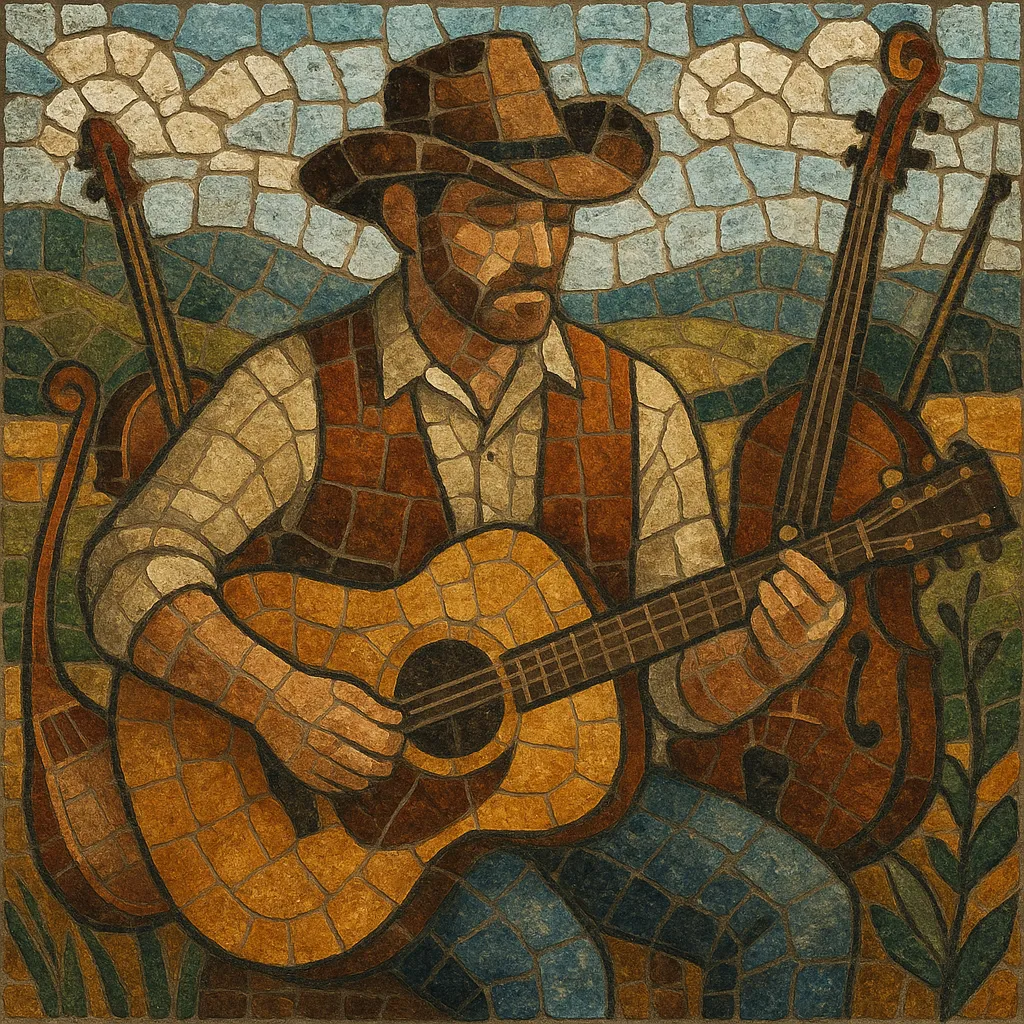
Acoustic country is country music performed primarily on acoustic instruments, emphasizing intimate, unadorned arrangements and narrative songwriting. It favors guitars, fiddles, banjo, mandolin, upright bass, and dobro over electrified or heavily produced sounds.
The style ranges from front‑porch ballads and waltzes to toe‑tapping two‑steps, but the common thread is clear, warm timbres, close vocal harmony, and lyrics grounded in everyday life, love, loss, and place. Compared with country-pop or arena-oriented styles, acoustic country aims for honesty, space, and dynamics, letting the singer and song take center stage.
The roots of acoustic country lie in the earliest commercial country recordings of the 1920s, when artists captured Appalachian ballads, fiddle tunes, and gospel songs with purely acoustic instrumentation. Before widespread electrification, guitars, fiddles, banjo, and upright bass defined the sound on radio barn dances and early 78s.
As honky-tonk and electric bands rose, acoustic performance remained vital in gospel quartets, string bands, and living-room picking circles. The 1960s–70s brought a wave of country-influenced singer-songwriters who often returned to stripped-down arrangements to spotlight storytelling and voice.
The late 1980s and 1990s saw an "unplugged" movement and a parallel Americana/alt‑country surge that foregrounded acoustic textures on records and stages. Intimate, roots-forward production reconnected mainstream audiences with the genre’s foundational sound.
Acoustic country thrives in both mainstream and independent scenes. Landmark acoustic sessions, roots festivals, and soundtrack moments helped renew interest. Today, many country artists release acoustic versions of singles or build entire careers around warm, minimalist production that lets songs breathe.
Use acoustic guitar (often with capo), fiddle, banjo (3‑finger or clawhammer), mandolin (for chop rhythm and melodic fills), upright bass (two-beat feel), and dobro/resonator for slides and color. Keep percussion minimal or use brushes/shakers if at all. Try a one‑mic or small‑diaphragm condenser setup to capture natural blend.
Rely on the boom‑chick pattern: alternating bass on beats 1–3 with strums on 2–4. Incorporate train beat feels at medium tempos, waltz time (3/4) for ballads, and two‑step (2/4) for uptempo numbers. Typical tempos range from ~70–100 BPM for ballads to 110–140 BPM for dancers.
Write in guitar‑friendly keys (G, D, A, C, E) with I–IV–V progressions, adding vi (I–vi–IV–V) for sentimental choruses. Mixolydian color (flat‑VII) and secondary dominants add twang without complexity. Melodies should be singable, with clear phrasing and room for harmony.
Lead vocals are upfront, conversational, and expressive. Add tight 2‑ or 3‑part harmonies (a third above/below) in choruses or key lines. For a high‑lonesome edge, let the harmony sit slightly above the lead.
Focus on storytelling: love, heartbreak, home, work, faith, travel, and small‑town snapshots. Use concrete imagery, strong verbs, and simple rhyme schemes (ABAB/AABB). A clear hook in the chorus ties the narrative together.
Common forms are verse–chorus–verse–chorus–bridge–chorus or AABA. Begin sparse (vocal + guitar), then layer fiddle/mandolin fills and light bass. Feature short instrumental breaks (8–16 bars) with tasteful flatpicking or fiddle lines; avoid overplaying.
Use Travis picking or alternating‑bass fingerstyle for intimacy; flatpick for momentum and runs. Employ a capo to fit the singer’s range. Record close but leave air; minimal compression preserves dynamics. Prioritize feel and clarity over density.

